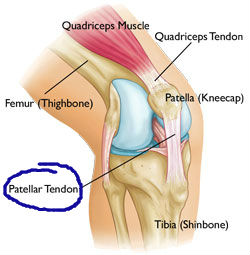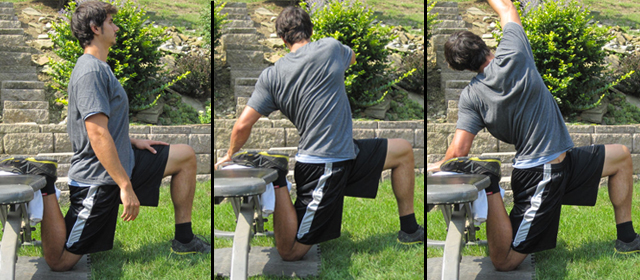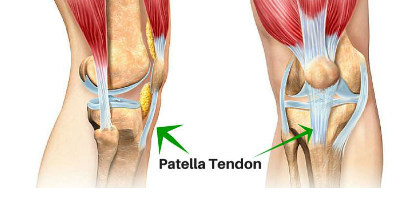You don’t care about my personal trials. I get that. I’m sharing this because maybe it’s one of those little mobility problems that can mean the difference between squatting three times a week and laying off forever because you think your knees are done. There are many types of knee pain, and this is one of them.
In April I hit a new front squat PR, and my left knee was NOT feeling good on the way up. But I completed the rep and racked the bar. Pain just under my kneecap, in the patellar tendon:

I had done plenty of warm up sets of increasing weight, so that wasn’t the problem.
Over the next three weeks I tried several things. Massage, high reps of bicycle kicks, air squats, and rest. Nothing worked, and it was only starting to hurt more, getting to the point where just walking up stairs was painful on both knees.
Still, I felt like it wasn’t serious and I was missing something.
With a search I found a T-Nation article, Straightforward Knee Rehab, by Anthony Mychal.

from T-Nation’s knee rehab article
The stretch wasn’t that different from what I had done before, but in a standing position, grabbing my ankle. This version, on the floor, is much more powerful.
I did one minute of this stretch with each leg, repeated it, and wow, no more pain!!
I did it much like the pic above, twisting my body towards the other leg to feel a good stretch, and bringing my heel into my butt.
Just as an update, after I initially made these notes I gave it two more months to make sure the fix was really working. I’m happy to report it has still turned out to be exactly what I needed. I don’t have to do it before every workout anymore – maybe only one in every two or three.
A bigger lesson this adds support to is: Pure rest rarely helps joint pain. You have to keep it moving, and more importantly, keep your joints mobilized properly through stretching, good warmups, and keep stressing it through progressive resistance training. Your body heals better when you keep putting pressure on problems, oddly enough. It intensifies the message that it needs to be fixed.
Conveniently, that’s also the best method to get stronger: progressively increasing the weight each workout to force your body to keep adapting to the increased load. Your body reacts by saying, “This idiot is lifting heavy ass stuff all the time, all the way to his limits of strength, and we can’t handle the stress. We need to get stronger!” Beyond young men’s beginner gains – where just about anything works – your body isn’t going to get stronger unless it can’t adequately handle the stress of what you’re putting it through.

